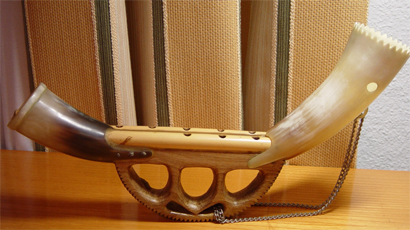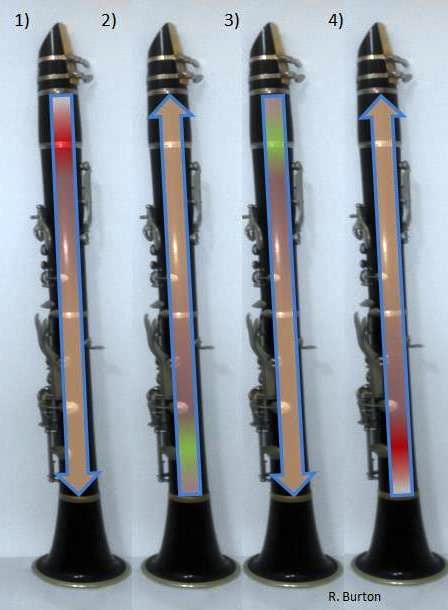|
Ganurags
Ganurags (from Latvian: "shepherd's horn") is a Latvian folk clarinet with a cylindrical wooden body onto which an animal-horn bell is attached to amplify the sound. Key systems were added to the instrument in the 20th century. See also * Birbynė * Zhaleika * Hornpipe The hornpipe is any of several dance forms played and danced in Britain and Ireland and elsewhere from the 16th century until the present day. The earliest references to hornpipes are from England with Hugh Aston's Hornepype of 1522 and others r ... References Clarinets Latvian musical instruments {{SingleReed-instrument-stub ... [...More Info...] [...Related Items...] OR: [Wikipedia] [Google] [Baidu] |
Birbynė
A ''birbynė'' is a Lithuanian aerophone that can be either single or double-reeded and may or may not have a mouthpiece. ''Birbynė'' can be made of a variety of materials: wood, bark, horn, straw, goose feather, etc. The earliest and simplest examples were used by children as playtoys and by shepherds as a tool to control the herd. In the 19th century, influenced by classical instruments and especially the clarinet, the ''birbynė'' evolved into a serious musical instrument used in ensembles. Modern ''birbynės'' are made of wood with bells of horn and usually have ten tone holes. They are divided by pitch range into three categories: soprano, tenor, and contrabass. See also * Ganurags * Zhaleika * Erkencho * Shofar A shofar ( ; from he, שׁוֹפָר, ) is an ancient musical horn typically made of a ram's horn, used for Jewish religious purposes. Like the modern bugle, the shofar lacks pitch-altering devices, with all pitch control done by varying the ... Reference ... [...More Info...] [...Related Items...] OR: [Wikipedia] [Google] [Baidu] |
Zhaleika
The ''zhaleika'' (russian: жале́йка), also known as bryolka (''брёлка''), is the Slavic wind instrument, most used in Belarusian, Russian and sometimes Ukrainian ethnic music. Also known as a "folk clarinet" or hornpipe. The zhaleika was eventually incorporated into the balalaika band, the Hungarian tarogato, and may have contributed to the development of the chalumeau, a predecessor of the clarinet. Construction and design The zhaleika consists of a single reed that can be covered by a mouthpiece (or "wind cap"). The design consists of a wooden barrel (pipe) with finger holes and a flared bell that can be made of either natural or man-made materials. It can either consist of a single or a double pipe. The single pipe is about 10–20 cm long with 3 to 7 finger holes. The reed is made out of either cane or goose feather, and the end bell is made of cow horn or birch bark. The double type consists of two pipes and one bell, and is found mainly in the southern ... [...More Info...] [...Related Items...] OR: [Wikipedia] [Google] [Baidu] |
1991 CPA 6373
File:1991 Events Collage.png, From left, clockwise: Boris Yeltsin, elected as Russia's first president, waves the new flag of Russia after the 1991 Soviet coup d'état attempt, orchestrated by Soviet hardliners; Mount Pinatubo erupts in the Philippines, making it the second-largest volcanic eruption of the 20th century; MTS Oceanos sinks off the coast of South Africa, but the crew notoriously abandons the vessel before the passengers are rescued; Dissolution of the Soviet Union: The Soviet flag is lowered from the Kremlin for the last time and replaced with the flag of the Russian Federation; The United States and soon-to-be dissolved Soviet Union sign the START I Treaty; A tropical cyclone strikes Bangladesh, killing nearly 140,000 people; Lauda Air Flight 004 crashes after one of its thrust reversers activates during the flight; A United States-led coalition initiates Operation Desert Storm to remove Iraq and Saddam Hussein from Kuwait, 300x300px, thumb rect 0 0 200 200 1991 So ... [...More Info...] [...Related Items...] OR: [Wikipedia] [Google] [Baidu] |
Latvian Language
Latvian ( ), also known as Lettish, is an Eastern Baltic language belonging to the Baltic branch of the Indo-European language family, spoken in the Baltic region. It is the language of Latvians and the official language of Latvia as well as one of the official languages of the European Union. There are about 1.3 million native Latvian speakers in Latvia and 100,000 abroad. Altogether, 2 million, or 80% of the population of Latvia, speak Latvian. Of those, around 1.16 million or 62% of Latvia's population use it as their primary language at home, however excluding the Latgale Region it is spoken as a native language in villages and towns by over 90% of the population. As a Baltic language, Latvian is most closely related to neighboring Lithuanian (as well as Old Prussian, an extinct Baltic language); however Latvian has followed a more rapid development. In addition, there is some disagreement whether Latgalian and Kursenieki, which are mutually intelligible with Latvian, s ... [...More Info...] [...Related Items...] OR: [Wikipedia] [Google] [Baidu] |
Clarinet
The clarinet is a musical instrument in the woodwind family. The instrument has a nearly cylindrical bore and a flared bell, and uses a single reed to produce sound. Clarinets comprise a family of instruments of differing sizes and pitches. The clarinet family is the largest such woodwind family, with more than a dozen types, ranging from the BB♭ contrabass to the E♭ soprano. The most common clarinet is the B soprano clarinet. German instrument maker Johann Christoph Denner is generally credited with inventing the clarinet sometime after 1698 by adding a register key to the chalumeau, an earlier single-reed instrument. Over time, additional keywork and the development of airtight pads were added to improve the tone and playability. Today the clarinet is used in classical music, military bands, klezmer, jazz, and other styles. It is a standard fixture of the orchestra and concert band. Etymology The word ''clarinet'' may have entered the English language via the Fr ... [...More Info...] [...Related Items...] OR: [Wikipedia] [Google] [Baidu] |
Idaho State University
, mottoeng = "The truth will set you free" , established = , former_names = Academy of Idaho(1901–1915)Idaho Technical Institute(1915–1927)University of Idaho—Southern Branch(1927–1947)Idaho State College(1947–1963) , type = Public research university , accreditation = NWCCU , endowment = $75 million (2021) , president = Kevin D. Satterlee , faculty = 826 (Fall 2019) , administrative_staff = , students = 12,157 (Fall 2021) , undergrad = 9,831 (Fall 2021) , postgrad = 2,326 (Fall 2019) , city = Pocatello , state = Idaho , country = United States , coor = , campus = Small City , campus_size = , sports_nickname = Bengals , mascot = Benny the Bengal , colors = Orange and Black , sporting_aff ... [...More Info...] [...Related Items...] OR: [Wikipedia] [Google] [Baidu] |
Hornpipe (instrument)
The hornpipe can refer to a specific instrument or a class of woodwind instruments consisting of a single reed, a small diameter melody pipe with finger holes and a bell traditionally made from animal horn. Additionally, a reed cap of animal horn may be placed around the reed to contain the breath and allow circular breathing for constant play, although in many cases the reed is placed directly in the mouth. It was also known as the pibcorn, pibgorn, or piccorn. One rare Scottish example, called the ''stock-and-horn'', is referred to by Robert Burns among others. Other hornpipes include the Spanish ''gaita gastoreña'', the Basque ''alboka'' and the Eastern European ''zhaleika''. When joined with a bag, Baines refers to the instruments as "bag-hornpipes". and Baines, Anthony C. 1995 ''Bagpipes'', 3rd ed. Occasional Papers on Technology. Oxford: Pitt Rivers Museum. Construction The traditional hornpipe has one or two narrow internal bores between 4 mm and 12 mm each, ... [...More Info...] [...Related Items...] OR: [Wikipedia] [Google] [Baidu] |
Clarinets
The clarinet is a musical instrument in the woodwind family. The instrument has a nearly cylindrical bore and a flared bell, and uses a single reed to produce sound. Clarinets comprise a family of instruments of differing sizes and pitches. The clarinet family is the largest such woodwind family, with more than a dozen types, ranging from the BB♭ contrabass to the E♭ soprano. The most common clarinet is the B soprano clarinet. German instrument maker Johann Christoph Denner is generally credited with inventing the clarinet sometime after 1698 by adding a register key to the chalumeau, an earlier single-reed instrument. Over time, additional keywork and the development of airtight pads were added to improve the tone and playability. Today the clarinet is used in classical music, military bands, klezmer, jazz, and other styles. It is a standard fixture of the orchestra and concert band. Etymology The word ''clarinet'' may have entered the English language via the Fren ... [...More Info...] [...Related Items...] OR: [Wikipedia] [Google] [Baidu] |




